
Extraordinary Bronze Statues Discovered at the Sanctuary of San Casciano dei Bagni
Emerging from the now mud-sodden, thermal waters of a sacred ancient sanctuary in Central Italy, more than 24 Etruscan-Roman era bronze statues in near perfect condition, plus literally thousands of coins have been recovered. The brand-new Italian Minister of Culture, Gennaro Sangiuliano, describes them as “an exceptional discovery for Italy” and “immense and unique treasures.” It is the largest discovery of its kind ever to emerge in Italy, and will rewrite the history of Etruscan-Roman statue art.
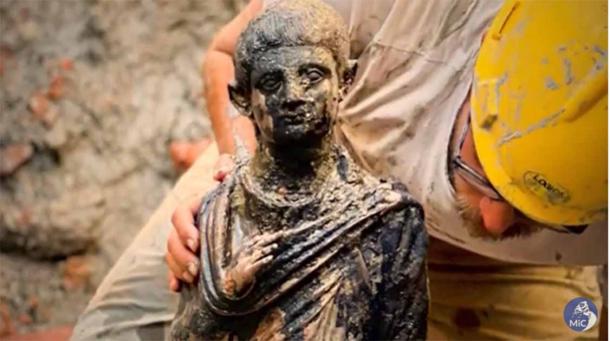
A complete statue in excellent state of preservation due to the hot water spring. (Screenshot / MiC)
A Museum Full of Etruscan Finds
The exceptional discoveries have been revealed by the excavation campaign of the Etruscan-Roman sanctuary connected to the ancient sacred bath at the thermal-mineral spring of the Bagno Grande (Big Bath) in San Casciano dei Bagni, in the province of Siena. Just a few months ago in August, Ancient Origins reported on some interesting votive offering finds at the site – a few Bronze ears, a penis, and a load of coins. But now, with the recently discovered statues, the investigators have really found the motherlode.
- Ancient Roman Baths and Sanctuaries Found at San Casciano dei Bagni
- Do not Underestimate the Etruscans: Art and Culture of their Own
Started in 2019, the excavation coordinated by Professor Jacopo Tabolli of the University for Foreigners of Siena led to these extraordinary new finds during October this year.
Many of the Etruscan bronze statues have been found in near perfect condition, having been “protected for 2,300 years by the mud and boiling water of the sacred pools” notes an ANSA report.
Along with these larger finds, an extraordinary number of coins have been discovered, reports the Italian Cultural Ministry. The coinage has now added up to a total of around five thousand gold, silver and bronze coins.
The sanctuary was active from the third century BC until the fith century AD Tabolli informs, according to the ANSA report. Its use was then terminated due to the spread of Christian faith, and so the statues were assigned to the water and the pools closed off with weighty pillars and stones. As care was taken to conceal the sanctuary rather than just destroy it, all these years the place has been a treasure trove waiting to be found, delighting the researchers.
- The Cerveteri Necropolis, Etruscan City of the Dead
- The Mysterious Pyramid of Bomarzo: Discovering The Etruscan’s Enigmatic Past
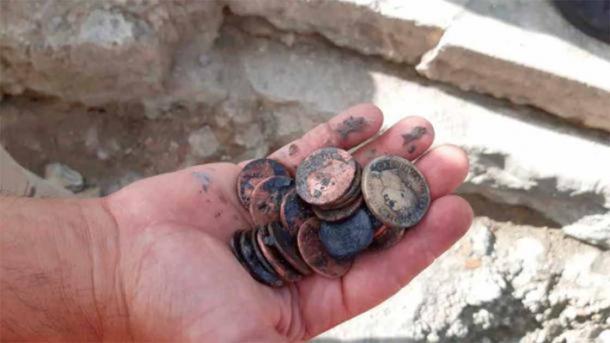
Coins, made of gold, silver, orichalcum, and bronze, have been dated to the reigns of Augustus, the Flavian emperors, Trajan, Hadrian, and Marcus Aurelius. (Emanuele Mariotti / SABAP-SI)
Rewriting History Books
Prof. Tabolli has described the bountiful site as, "A discovery that will rewrite history and on which more than 60 experts from all over the world are already at work".
Coincidentally, the find has come 50 years after the discovery in 1972 of the famous "Riace bronzes". But now the history of bronze statuary of the Etruscan and Roman age is being rewritten in San Casciano dei Bagni.
The Tuscan site is now the largest deposit of bronze statues of the Etruscan and Roman age ever discovered in Italy. What’s more, its importance resonates throughout the Mediterranean as unequalled, as, until now, mainly terracotta statues were known of this era.
The Healing Center
The San Casciano dei Bagni bath complex, under the Romans, became a wealthy religious sanctuary, and a flourishing thermal resort . In their heyday, the pools bubbling with natural hot therapeutic water, must have been a visually diverse scene. The baths included breath-taking scenery on all four sides, with different altitudes and topography, fountains, colonnades, and water features. Thermal bath tourism is still a key industry for this small Tuscan hamlet.
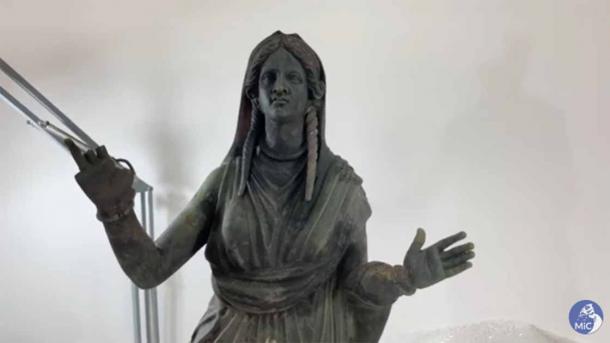
Goddess effigy. (Screenshot / MiC)
Healing with the Gods
The bronzes of San Casciano depict the Etruscan-Roman deities venerated in the sacred spring bath. Their presence, together with the votive offerings of organs and anatomical parts, allowed the curative intervention of the divinity to be requested through the thermal waters. For example, in recent weeks, effigies of Hygieia and Apollo have re-emerged from the hot mud.
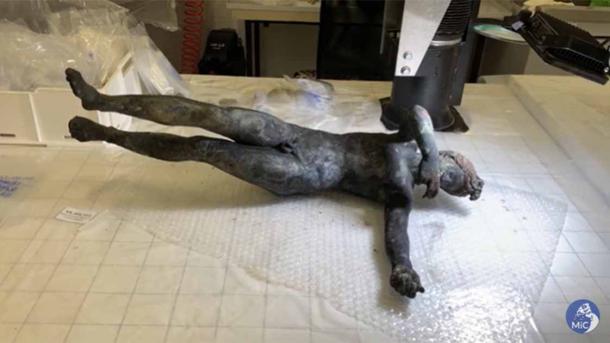
Statue of Apollo recently removed from the bath. (Screenshot / MiC)
The new Minister of Culture, Gennaro Sangiuliano visited the site and declared it to be, “An exceptional find, which confirms once more that Italy is a country of immense and unique treasures. The stratification of different civilizations is unique in Italian culture.”
Director General of Museums, Massimo Osanna, who has just approved the purchase of the sixteenth-century building that will house these treasures in the village of San Casciano stated:
"It is the most important discovery since the Riace Bronzes and certainly one of the most significant bronzes ever found in the history of the ancient Mediterranean.”
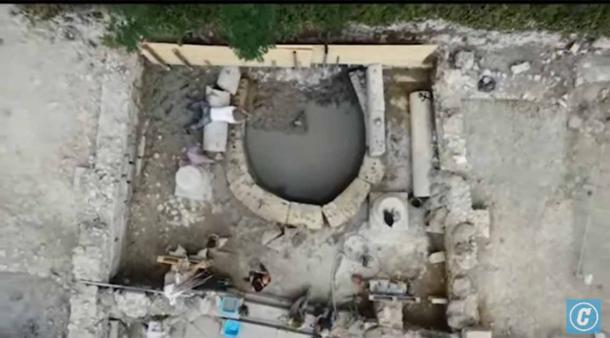
The deep bath from which the treasures have been excavated. (Screenshot / Corriere de la Sella)
“This discovery offers San Casciano an opportunity that is not only cultural and tourist, but is a real opportunity for rebirth,” says the Mayor of the Tuscan municipality, Agnese Carletti. “A new museum will be born in San Casciano, which will house the exceptional statues, and an archaeological park. Two new places that will be a real engine of development for the territory that will add to the already exciting presence of young archaeologists from all over the world who, thanks to this excavation, are now repopulating the country for many months a year”.
Top image: Archaeologists remove an Etruscan Bronze statue from the mud at the San Casciano dei Bagni site. Source: Screenshot / ANSA
By Gary Manners
















Comments
It looks like those were offerings to the Gods.
GLVJR
Looks like Frodo really did exist.
I hope that a multiligual inscripton could also be found that might provide some positive deciphering of the Etruscan language.
Probably intentionally stored away down there to prevent somebody from taking it. The person who knew it was there obviously took the secret with him.
Nobody gets paid to tell the truth.